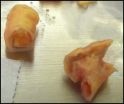(Press-News.org) London, June 10, 2014 – Papers published in the latest themed issue of Reproductive Health Matters demonstrate the extent of evidence and progressive thinking around population dynamics and sustainability that is informing development policies and programs. The theme of this issue is timely given that meetings and negotiations are currently taking place around the world to decide what will be included in the post-2015 development goals.
The discussions about the post-2015 agenda have focused on calling out to sexual and reproductive health and rights (SRHR) advocates and service providers to form broader coalitions and launch innovative joint projects with sustainable development advocates. Papers in this issue provide examples of such collaborations; including population health and environment (PHE) programs which integrate reproductive health services with conservation, and disaster resilience work.
The editorial of the issue emphasises the need to learn from the history of family planning policy and practice and to be sceptical about what can be achieved through family planning provision alone. Marge Berer, Editor of Reproductive Health Matters states: "Claims are again being made that [family planning] will save the world. [...] Unfortunately, it won't, and everyone needs to study/remember that history so that the same mistakes and the same narrow vision, affecting policy and programmes, are not repeated."
Papers published are written by authors from countries across the globe, such as Brazil, China, Ethiopia, Kenya, Madagascar, Somaliland, South Africa, Tanzania, Uganda; papers address a wide range of topics related to the theme, including:
Neoliberal globalisation, poverty, and universal access to health; development, demography and SRHR, policy implications; fertility, contraception and the one child policy; integrating PHE and SRHR; scaling up conservation programmes; conscientious objection to abortion; a programme to promote female condoms; FGM; anti-homosexuality legislation and more.
INFORMATION:
Notes to editors
The issue "Population, environment and sustainable development" of Reproductive Health Matters, Volume 22, Issue 43 (May 2014) published by Elsevier, is now available on ScienceDirect.
Full texts of articles are available to credentialed journalists upon request; contact Lisa Hallgarten at +44 207 267 6567 or lhallgarten@rhmjournal.org.uk Journalists may also contact newsroom@elsevier.com.
About Reproductive Health Matters (RHM)
Reproductive Health Matters is published twice a year, in May and November in English, with editions in translation in Arabic, Chinese, French, Hindi, Portuguese, Russian and Spanish. RHM covers laws, policies, research and services that meet women's reproductive health needs. Each issue focuses on a main theme and includes feature papers, topical papers on other subjects and a round-up of information from published literature. http://www.rhmjournal.org.uk
About Elsevier
Elsevier is a world-leading provider of information solutions that enhance the performance of science, health, and technology professionals, empowering them to make better decisions, deliver better care, and sometimes make groundbreaking discoveries that advance the boundaries of knowledge and human progress. Elsevier provides web-based, digital solutions — among them ScienceDirect, Scopus, Elsevier Research Intelligence and ClinicalKey — and publishes nearly 2,200 journals, including The Lancet and Cell, and over 25,000 book titles, including a number of iconic reference works.
The company is part of Reed Elsevier Group PLC, a world-leading provider of professional information solutions in the Science, Medical, Legal and Risk and Business sectors, which is jointly owned by Reed Elsevier PLC and Reed Elsevier NV. The ticker symbols are REN (Euronext Amsterdam), REL (London Stock Exchange), RUK and ENL (New York Stock Exchange).
Media contact
Lisa Hallgarten
Editorial Office RHM
+44 207 267 6567
lhallgarten@rhmjournal.org.uk
RHM announces publication latest issue: Population, environment & sustainable development
2014-06-10
ELSE PRESS RELEASES FROM THIS DATE:
Male dwarf spiders make sure offspring is their own
2014-06-10
Chastity belts were not first thought out in mediaeval times – members of many animal groups have evolved similar mechanical safeguards to ensure their paternity. Male dwarf spiders, for instance, use mating plugs to block off the genital tract of the female they have just mated with. The larger and older the plug, the better the chances are that other males will not make deposits in a female's sperm storage organ, too. So says Katrin Kunz and co-authors of the Zoological Institute and Museum in Greifswald, Germany, in an article published in Springer's journal Behavioral ...
Signpost for health services: Teenagers go from school psychologist to family doctor
2014-06-10
After initially visiting a school psychologist, adolescents in the United States with a mental disorder often go to seek care from their pediatricians or family doctors. Fewer of them continue their treatment directly with a psychotherapist or doctor specialized in mental disorders. This shows an analysis conducted by scientists at the University of Basel that has just been published in the academic journal PLOS ONE. The results are based on a nationally representative cohort of 6,500 U.S. teenagers.
A considerable number of children and adolescents suffer from a mental ...
ESMO survey sheds light on common clinical practice for incompletely resected lung cancer
2014-06-10
VIDEO:
R.Califano explains why ESMO Young Oncologists launched a survey on common clinical practice for incompletely resected lung cancer and analyses interesting results claiming for more adherence to guidelines and more...
Click here for more information.
Lugano, Switzerland, 10 June 2014 -- A landmark survey of more than 700 specialists provides crucial real-world insight into the treatments most oncologists choose for lung cancer patients whose tumour has been incompletely ...
Game changer for leukemia therapy
2014-06-10
Australian researchers are zeroing in on a promising new approach to killing off cancer cells in patients with leukemia.
In a study led by the South Australian Health and Medical Research Institute (SAHMRI) and the University of Adelaide's Centre for Personalised Cancer Medicine, researchers have found that cancer cells decide whether to live or die after a short period of intense exposure to targeted therapy, opposing the current requirement for continuous treatment.
The researchers say this study presents a new treatment strategy which will translate to a significant ...
Women appear in only 5 percent of sports newsprint
2014-06-10
This news release is available in Spanish.
Women are the subject of news in sports papers in only 5.11% of the cases, sometimes alone (2.18%) and others accompanied by men (2.93%). On the other hand, men are the focus of this kind of information in 92.2% of the cases, according to a study presented recently by UC3M professor Clara Sainz de Baranda at the II International Conference on Gender and Communication. "The remaining 5% is neutral information, which is why, in these kinds of topics, like soccer balls, fields, field houses and goals, men appear more often ...
New teaching approach touted for engineering education
2014-06-10
WEST LAFAYETTE, Ind. – Purdue University researchers who developed a new approach to more effectively teach large numbers of engineering students are recommending that the approach be considered for adoption by universities globally.
The system, called the Purdue Mechanics Freeform Classroom, allows students to interact with each other and faculty online while accessing hundreds of instructional videos and animations. It was pioneered by Charles Krousgrill, a professor of mechanical engineering, and has been used for more than two years in two mechanical engineering core ...
Virginia Tech architect reveals 'green roofs' need not go to great depths to work
2014-06-10
Hot town, summer in the city — it's nothing new, but ways to handle the heat, humidity, and stormwater haven't changed much since the invention of the sewer system.
One solution offered by architectural researchers is known as a "green roof" — a roof covered in living, growing plants to soften the effects of heat, flooding, noise, and stormwater runoff.
Elizabeth J. Grant, an assistant professor of architecture and design at Virginia Tech, will present ways for architects to determine the most effective depths of green roofing for stormwater control on Thursday at the ...
Scientific breakthrough: International collaboration has sequence salmon genome
2014-06-10
Vancouver, BC - Today the International Cooperation to Sequence the Atlantic Salmon Genome (ICSASG) announced completion of a fully mapped and openly accessible salmon genome. This reference genome will provide crucial information to fish managers to improve the production and sustainability of aquaculture operations, and address challenges around conservation of wild stocks, preservation of at-risk fish populations and environmental sustainability. This breakthrough was announced at the International Conference on Integrative Salmonid Biology (ICISB) being held in Vancouver ...
MRI shows brain abnormalities in late preterm infants
2014-06-10
OAK BROOK, Ill. – Babies born 32 to 36 weeks into gestation may have smaller brains and other brain abnormalities that could lead to long-term developmental problems, according to a new study published online in the journal Radiology.
Much of the existing knowledge on preterm birth and brain development has been drawn from studies of individuals born very preterm, or less than 32 weeks into gestation at birth.
For the new study, researchers in Australia focused on moderate and late preterm (MLPT) babies —those born between 32 weeks, zero days, and 36 weeks, six days, ...
Bacteria help explain why stress, fear trigger heart attacks
2014-06-10
WASHINGTON, DC – June 10, 2014 - Scientists believe they have an explanation for the axiom that stress, emotional shock, or overexertion may trigger heart attacks in vulnerable people. Hormones released during these events appear to cause bacterial biofilms on arterial walls to disperse, allowing plaque deposits to rupture into the bloodstream, according to research published in published today in mBio®, the online open-access journal of the American Society for Microbiology.
"Our hypothesis fitted with the observation that heart attack and stroke often occur following ...





